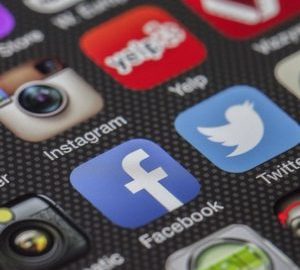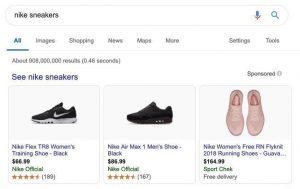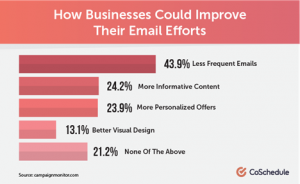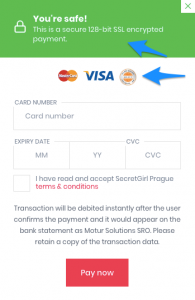Social media has become one of the most effective marketing tools ever. It’s created an entirely new sub-genre of marketing and has become a digital publicity beast. If you’re a business owner developing a marketing strategy, including social media to boost your company’s brand awareness is a no-brainer. But before you start creating profiles for your company, you need to determine which platforms would be best to promote your brand and improve your organization’s name recognition.
When choosing the right social media channels to focus on, you should consider the type of products and services you offer as well as who your target audience is. Additionally, each platform has different groups of users characterized by certain demographics, so having a solid understanding of each channel’s reach is crucial to your overall social media strategy.
Keep reading to learn who uses each social media channel and what type of content to post to increase your business’ brand awareness online.
Who Uses Each Social Media Platform?
Warren Knight provides great insight into the number and type of active users on each platform on Social Media Examiner. He reports:
- Facebook as having 1.86 billion active users
- Twitter is at 319 million active users
- Instagram has 600 million active users
- LinkedIn is at 500 million active users
While there’s no dominant age group for users on Facebook, 22.5% of Twitter’s user base is between 25-34.
Some of the more interesting demographics come from Instagram’s user base. As Salman Aslam from Omnicore reports:
- 80% of Instagram’s users are outside the U.S
- More than half are women
- 28% of all users are 18-29
The report also shares that out of LinkedIn’s 500 million users, 100 million of them are over the age of 50.
Based on these statistics, businesses who are looking to target millennials should create profiles on Twitter and Instagram, while companies who want to target users of all ages or specifically users over 35, should use Facebook.
Although LinkedIn is also a major social media platform, it’s a little different regarding calculating daily active users. LinkedIn targets industry professionals, such as businesses connecting with potential employees and vice versa. LinkedIn users are active on a more sporadic basis, meaning they use it most frequently when looking for jobs or for businesses, when they are looking to hire. If you’re in a B2B industry, you may want to focus more efforts on LinkedIn, however for most B2C companies, LinkedIn is a secondary platform following Facebook, Instagram and/or Twitter.
Types of Social Media Content
Now that we have a better understanding of each social media platform’s user base, let’s talk about how to boost brand awareness. How do you do that? Through sharing customized content.
How can you use content to increase your brand awareness? Ask yourself, “What does your business specialize in? What keywords are the best fit for your company?” As you create content – from blog posts to social media updates and everything in between – keep these elements of your business in mind so everything you create reinforces your brand to readers and followers.
As Disha Dinesh explains, there are basic content types for optimum engagement:
- Organic written
- Emotional
- Storytelling
- Conversational
- Real-time
- Informational
- Visual
Organic written content, or customized content, refers to content that is written by you specifically for your audience, which includes blog posts or original images with captions; these double as informational content if you also provide facts or statistics.
Emotional content means it makes the consumer feel something, like a funny meme or inspiring commercial.
Storytelling content is self-explanatory in that you tell a story, but the story has to have a point. For example, you could write about the hard work it took to start your business, or create an open conversation with your followers by asking a question; the most important thing is to make the post interactive!
Real-time posts are usually about celebrating holidays or remembering people on specific memorial days. Share an image to celebrate holidays to really boost brand awareness and SEO.
When sharing visual content, the most effective visuals are infographics, memes, gifs or other images in addition to video, which reigns supreme.
Social Media Content Tips by Platform
Although there’s general advice that carries over to each social media platform, each one also has its own audience and culture. Here’s some advice to keep in mind as you carefully craft updates for each of your social channels.
- Facebook. To increase brand awareness through engagement on Facebook, it’s important to know that their algorithm is designed to expand the reach of your posts based on higher engagement rates. The more reactions, likes and comments a post gets, the higher the engagement. But, how do you get higher engagement, you ask? You need to post content that is proven to get reactions, likes and comments. For Facebook, photo and video content have the highest engagement rates, but more specifically, native and live video content. As I mentioned in my blog post about how to use video on social media like Chris Pratt, humor is one of the most successful types of content, because it’s positive, it breaks the monotony of professional posts, it helps us de-stress with a good laugh. Chris Pratt’s #WhatsMySnack Instagram series is a great example of funny video content that’s so wildly popular.
- Twitter. To boost engagement on Twitter, it’s important to use hashtags strategically. Whether you use trending hashtags or you create your own, consumers use hashtags when searching on Twitter. At Three Girls, we recommend using up to three hashtags per Twitter update (more than that and the post can end up looking like spam to followers). Tweet frequency helps as well. The more you tweet, the more active your page is. Although there is a 140-character limit, there are ways around it if you want to share a longer post, which includes providing a link to another site that has a longer description of the content you’re sharing, sharing the details in an image and tweeting the image, or spreading your message out among several tweets so when followers read them back-to-back they make up a complete post. Retweeting other tweets helps engagement, because you’re essentially helping boost engagement for the original poster in addition to yourself. Ask questions or conduct polls. Of course, what was true for Facebook is true for Twitter regarding photos and videos as well.
- Instagram. Instagram is a bit different than Facebook and Twitter in that you can only share images and videos. However, like Twitter, you can also use hashtags on Instagram. While you can use up to 30 hashtags, it’s best to only use a few in the post itself and then list out the rest as a comment, which is not only better for analytics, it’s easier on the eyes when consumers are scrolling through their feed. When it comes to using hashtags, don’t overuse or abuse them! As Jonathan Chan explains, choose hashtags that are specific, targeted, relevant to your post or business, thoughtful and innovative. In terms of video, Instagram recently introduced a new feature called Stories, which is live streaming video, but the content is only available on your page for 24 hours and then disappears. Also, don’t forget to engage with your followers as well as other brands or people in your industry or local community! Engaging with each other gives your profiles a boost and connects you with like-minded people. After all, it’s called social media for a reason.
- LinkedIn. While LinkedIn is a bit different than the other three channels we discussed, there are some basic functions that are the same across the board, such as commenting on posts or milestones. When posting articles and other written content, your connections (as they’re called on the platform), can comment on them. Articles are one of the most shared types of content on LinkedIn. Recent studies showed that short content, such as blogs with less than 1,000 words, were the most popular, while long posts consisting of 3,000 words or more were the most shared. Don’t forget to include photos and videos, as articles with photos receive much higher click rates. One way to do this is to create custom images, such as infographics. Unlike other social media channels, posting only promotional or spammy content is not advised on LinkedIn. The idea is to connect to other users with quality and informational content. Joining and participating in relevant groups is also beneficial to your brand as it’s easier to find and connect with people in your community or industry.
Now that you have a better understanding of the social media user bases and what types of content to post, hopefully it will help simplify the process of creating your social media strategy.
Digital & Social Articles on Business 2 Community(36)







